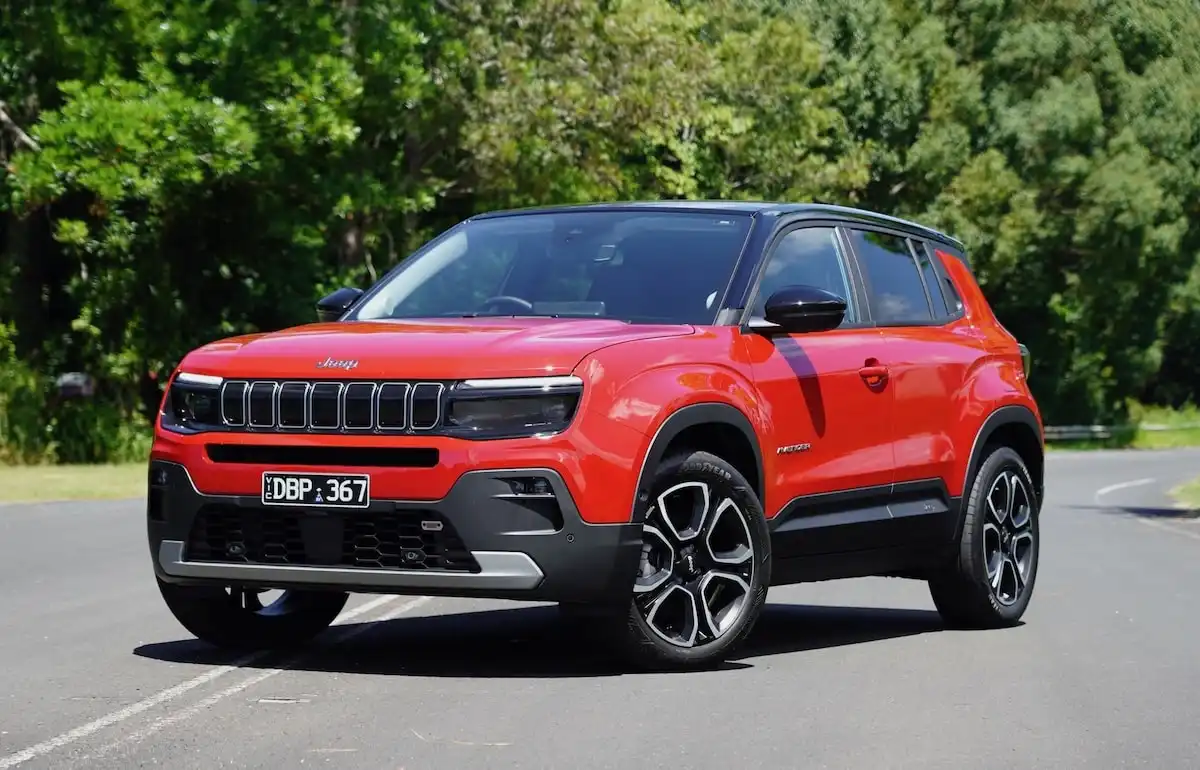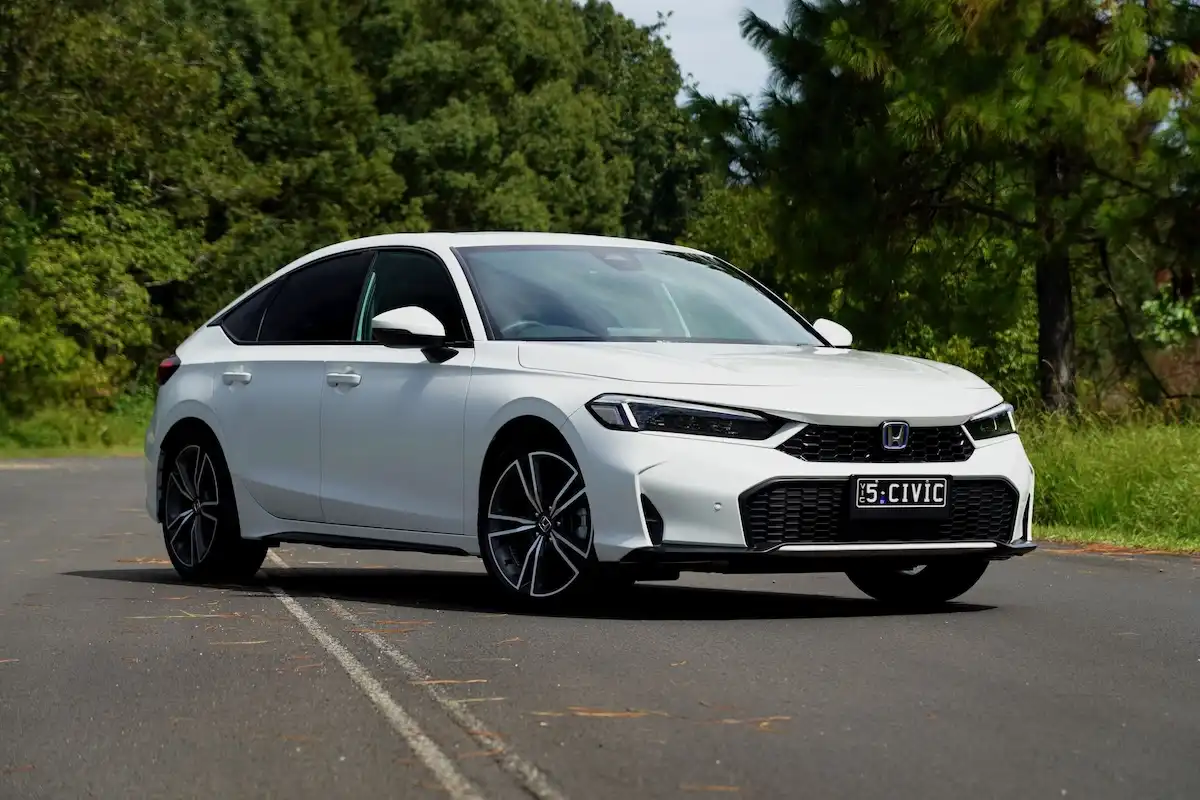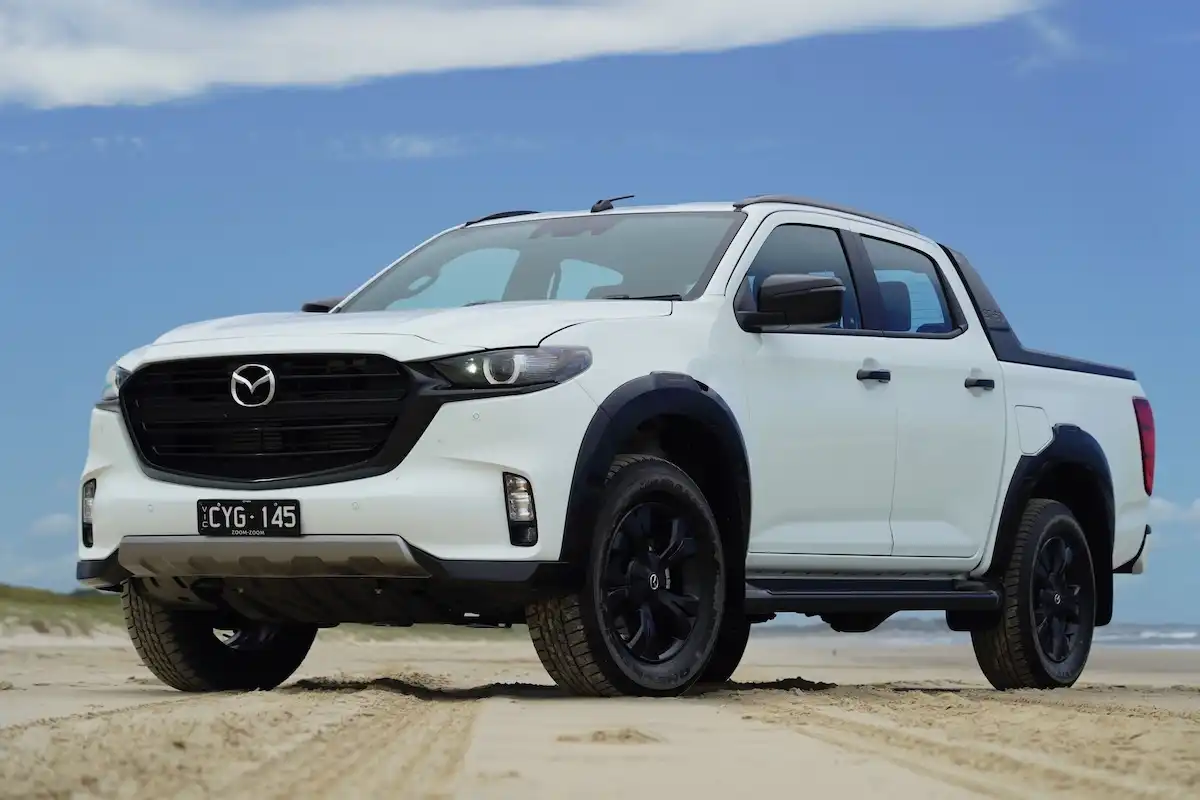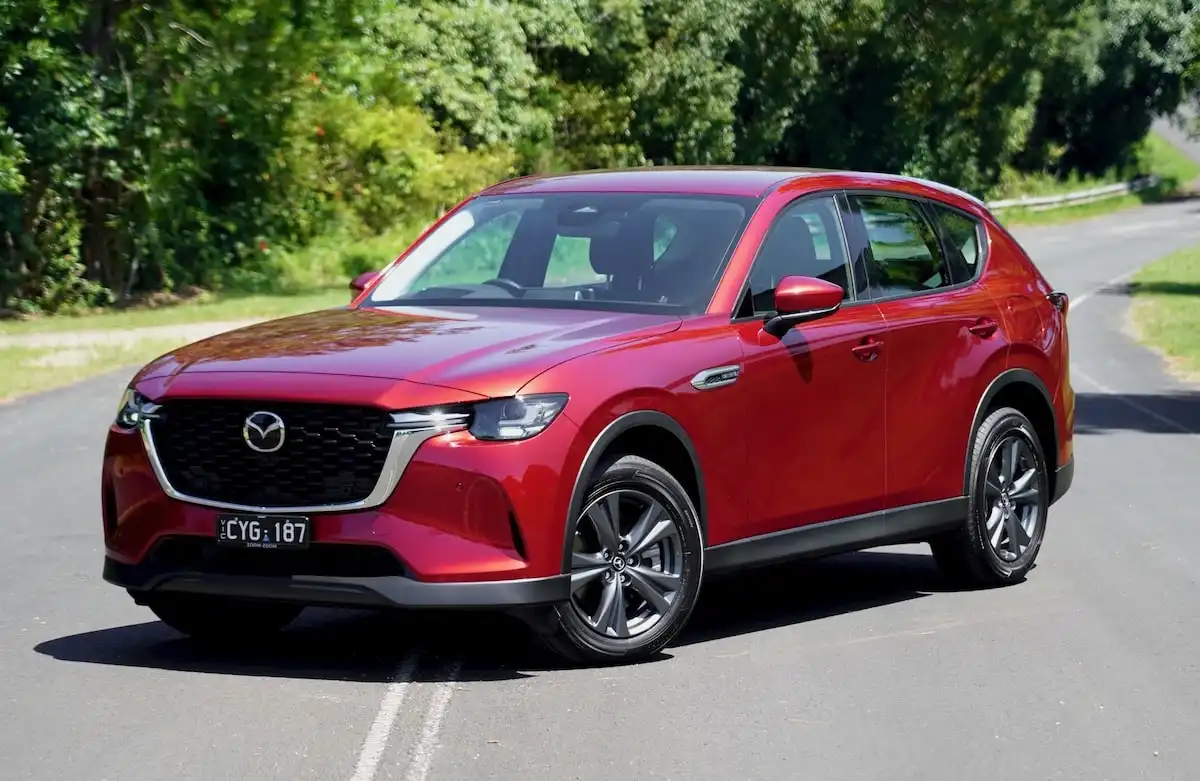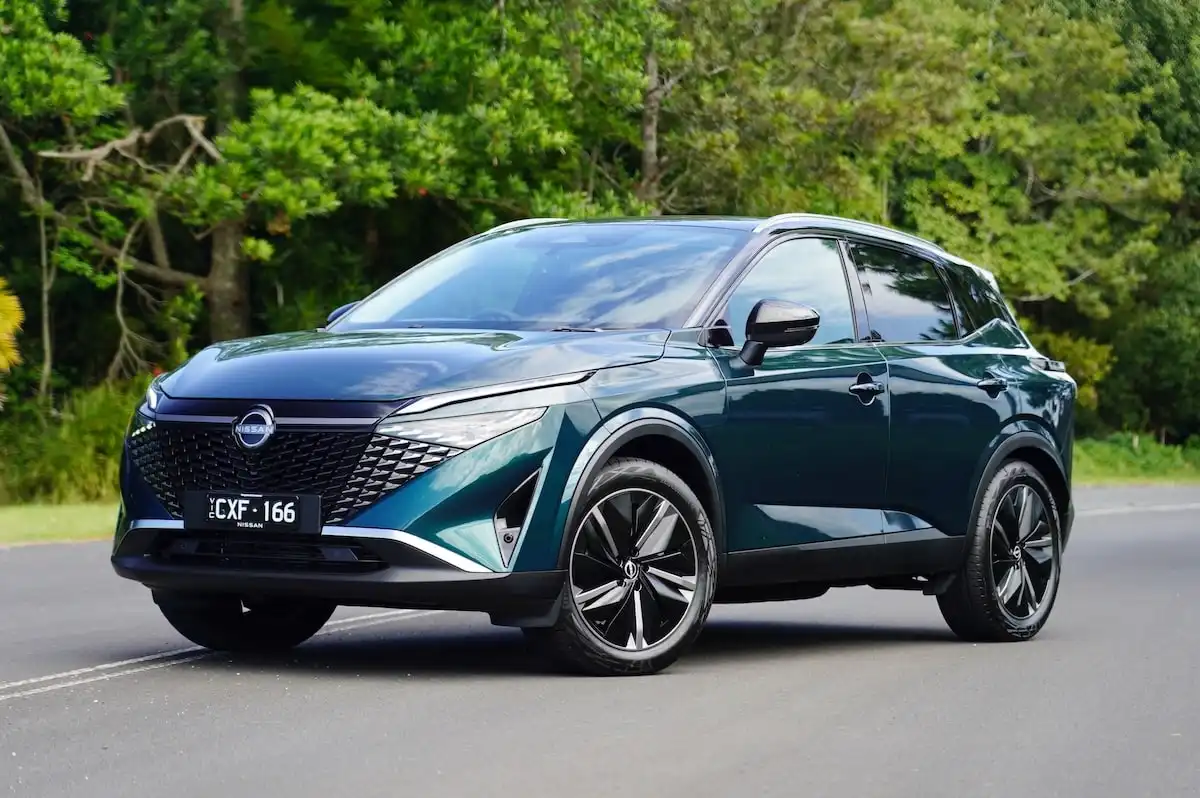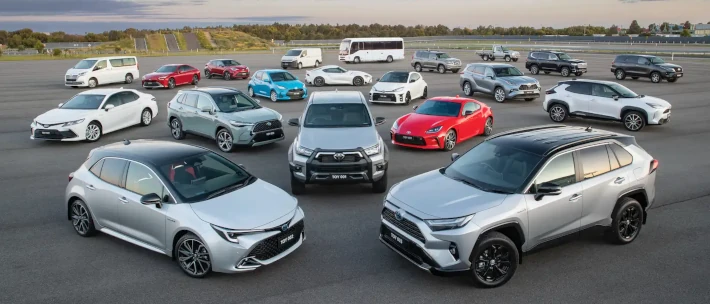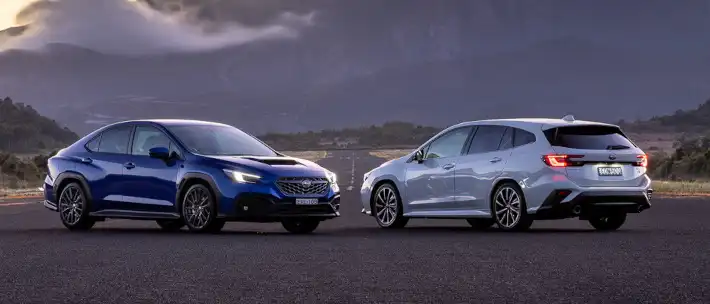It’s a pint-sized, electric compact SUV designed to showcase the future of Jeep’s battery-electric innovation, sitting in the ever-popular small SUV segment.
The Avenger comes riding on Stellantis’ new eCMP2 platform that is set to underpin the upcoming Fiat 600 range, as well as the Alfa Romeo Junior, that position it as a petite SUV for the urban jungle, far more so than Jeep’s previous creations.
The main problem for the Avenger, though, remains its fierce competition within the growing battery-electric compact SUV segment, which means that it needs to impress from the get-go to win-over buyers from its rivals.
Just how well does the Avenger perform, then, and how does it stack up against its competitors when it comes to value, driving refinement, energy efficiency and features?
We got behind the wheel of the range-topping Summit to find out if it’s worth stretching the budget or if you’re better off with the base model.
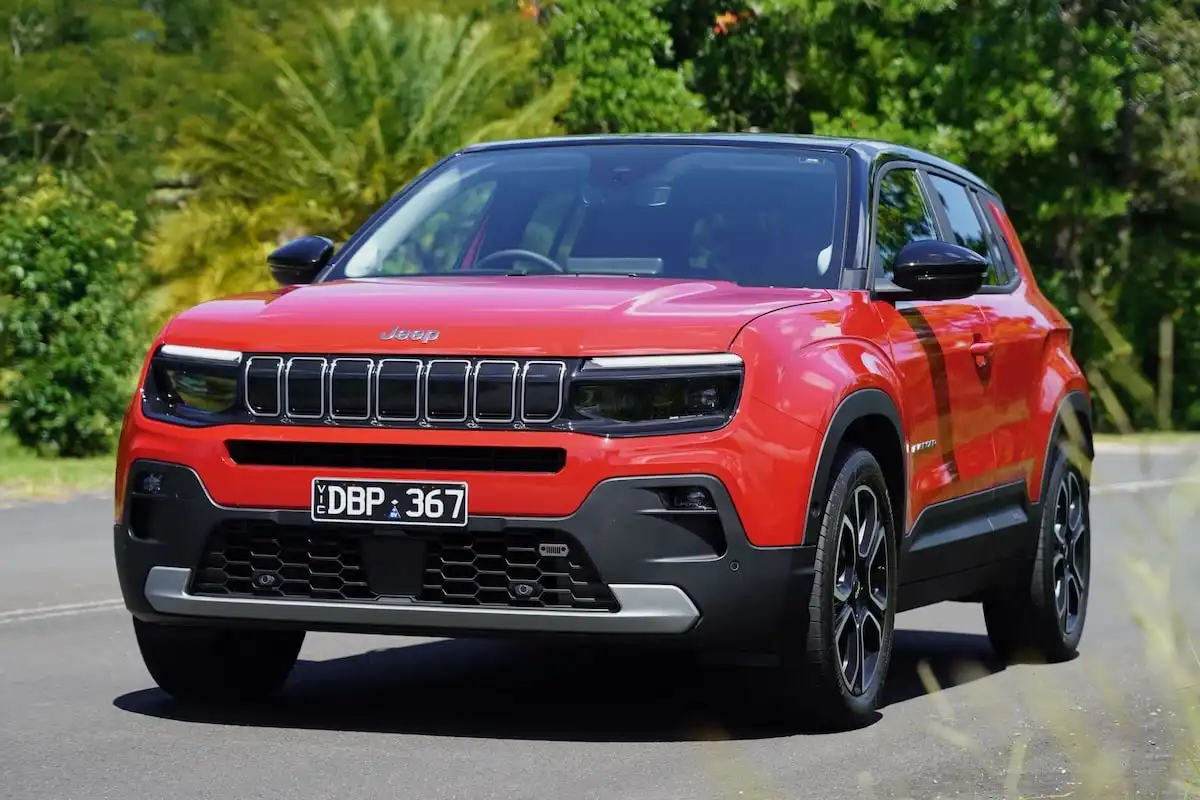
Jeep Avenger Competition
Jeep Avenger |
VS |
BYD Atto 3 |
| MG 4 | ||
| Volvo EX30 | ||
| Chery Omoda E5 | ||
| Leapmotor C10 | ||
| Tesla Model Y | ||
| Hyundai Kona Electric | ||
| Volkswagen ID.4 | ||
| Renault Megane E-Tech | ||
| Smart #1 |
How Much Does the Jeep Avenger Cost?
Jeep offers the MY25 Avenger range here in Australia in a three-strong lineup.
Prices for the entry-level Avenger Longtitude stand at $49,990 while the mid-range Avenger Limited is priced at $54,990.
Stepping up to this, the flagship Avenger Summit brings the price up to $60,990.
Avenger Longitude - $49,990
Avenger Limited - $54,990
Avenger Summit - $60,990 (tested)
Keep in mind that these prices are subject to change and do not include on-road costs.
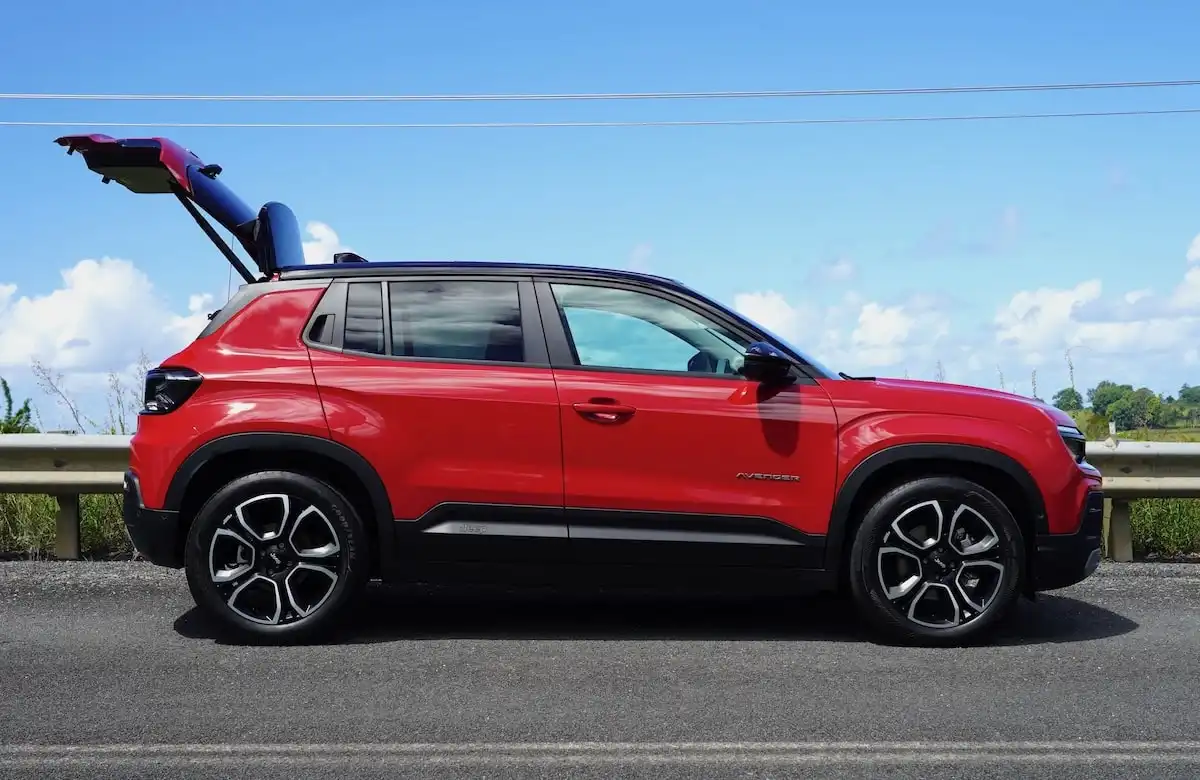
How Much Can OnlineAuto Save You?
Using OnlineAuto’s car buying service, you could save thousands on your next car with the help of our team of car-buying specialists.
Jeep Avenger Summit Specifications
| Model Date | 2025 |
| Make | JEEP |
| Model | AVENGER |
| Series | JJ MY24 |
| Variant | SUMMIT |
| Body | 4D WAGON |
| Fuel type | ELECTRIC |
| Transmission | 1 SP AUTOMATIC |
| Drive | FWD |
| Engine | ELEC |
| Engine capacity | 0 |
| Engine configuration | NOT APPLICABLE / 0 valves |
| Engine RPM | 0.0 / 0.0 |
| Cylinders | - |
| Torque | 260 |
| KW | 115 |
| Fuel tank size | 0.0 |
| Fuel usage specs | 0.0 / 0 |
| CO2 | 0 |
| ANCAP security rating | 3 |
Get in touch with one of our Car Buying Specialists today.
Request a quoteWhat Features & Specs Does the Jeep Avenger Have?
Sitting at the top of the Avenger range, the Summit picks up all the bells and whistles that Jeep can throw at it.
This means you’ll pick up a set of 18-inch alloys as well as LED head & tail lights, a panoramic sunroof, leather upholstery with heated front seats, a massaging driver’s seat, a two-tone roof, gloss black front grille, rear privacy glass and a heated windscreen.
You’ll also receive features found in lesser Avenger variants, which adds adaptive cruise control, keyless entry & start, a wireless charging pad, a powered boot lift, Jeep’s Selec-Terrain drive modes, a rear-view camera with front, rear & side parking sensors, a leather-wrapped steering wheel, a 10.25-inch digital instrument cluster and a frameless, auto-dimming rear-view mirror.
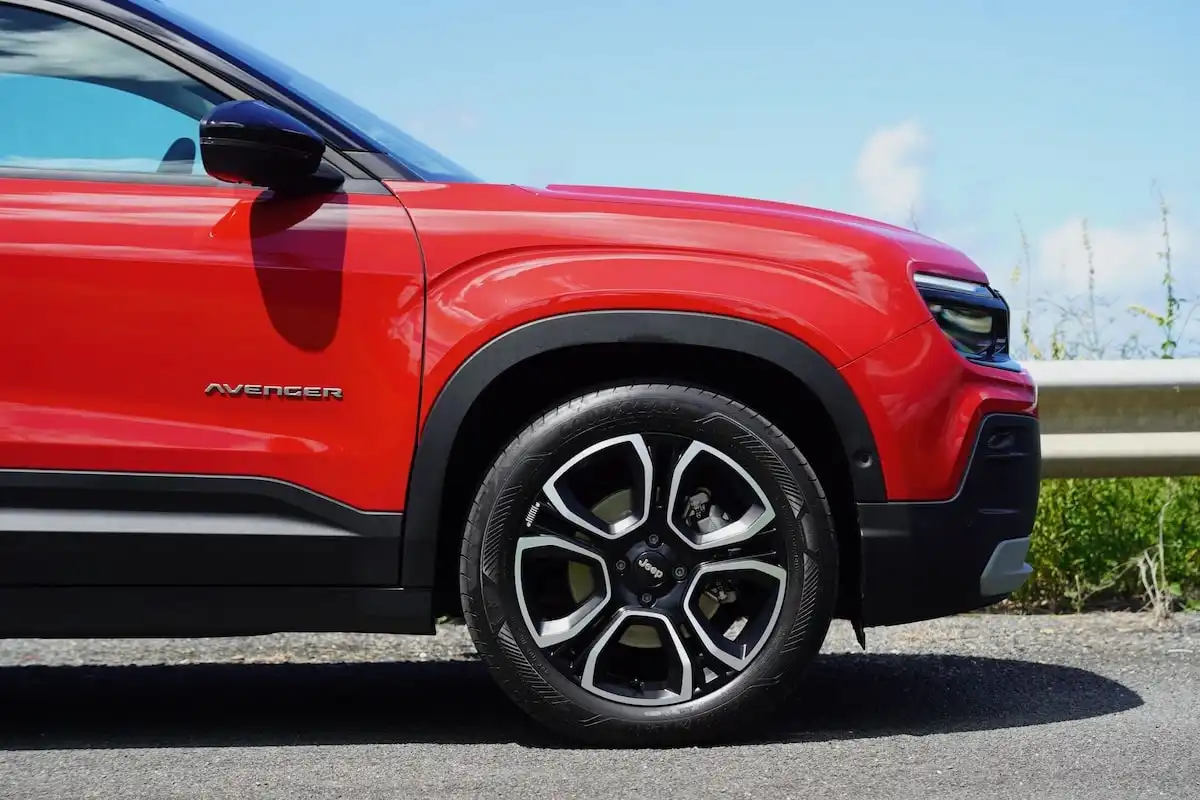
Jeep Avenger Connectivity & Infotainment Features
All members of the Jeep Avenger range, including the range-topping Summit come packaged with the same 10.25-inch touchscreen infotainment display sitting atop the dashboard.
It’s a neat little unit that doesn’t lead the pack in terms of outright size, though remains user-friendly to navigate, bright in the middle of the day and fairly responsive to inputs.
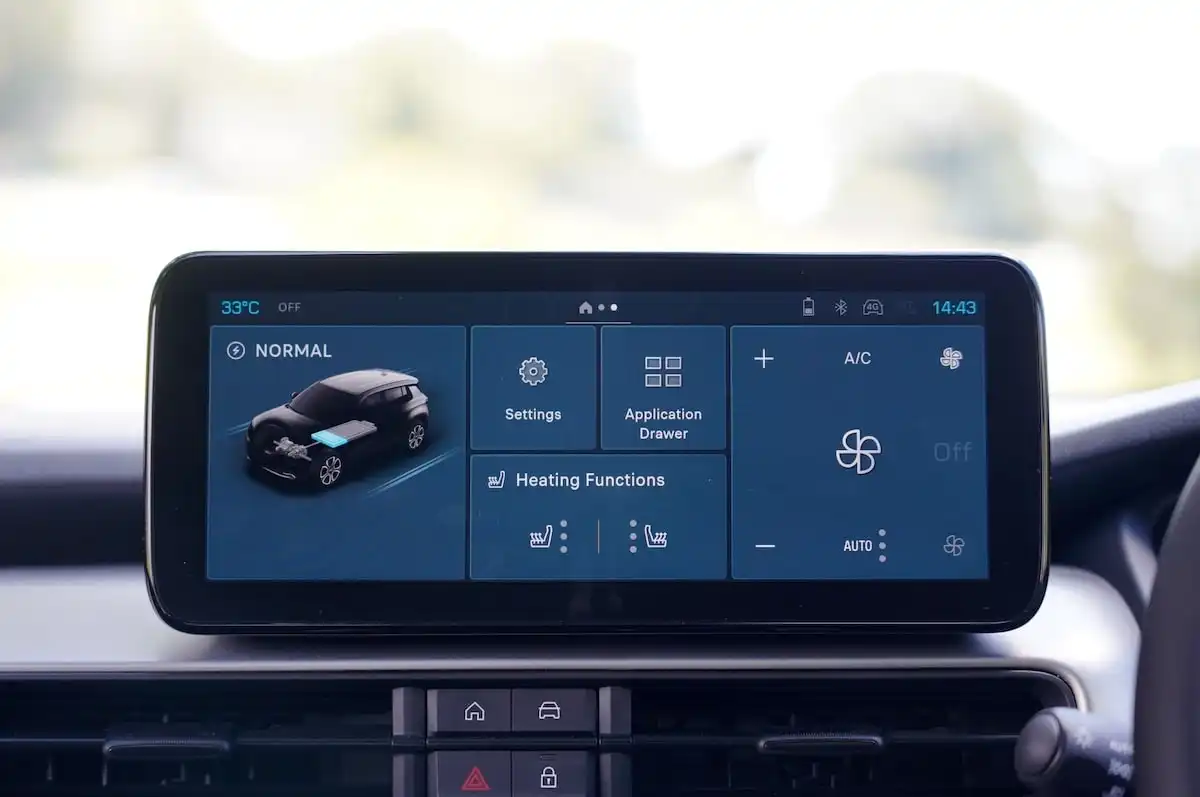
To make things even more user-friendly, Jeep has retained a physical home button as well as a vehicle settings button beneath the display for quick access to the Avenger’s active safety suite.
Jeep’s infotainment system offers satellite navigation as well as AM/FM and DAB+ digital radio and is paired with a six-speaker sound system that sounds solid.
The 10.25-inch display is powered by the latest iteration of Jeep’s Uconnect system which is a significant leap forward in terms of clever tech and useability and also supports Jeep’s latest connected services suite.
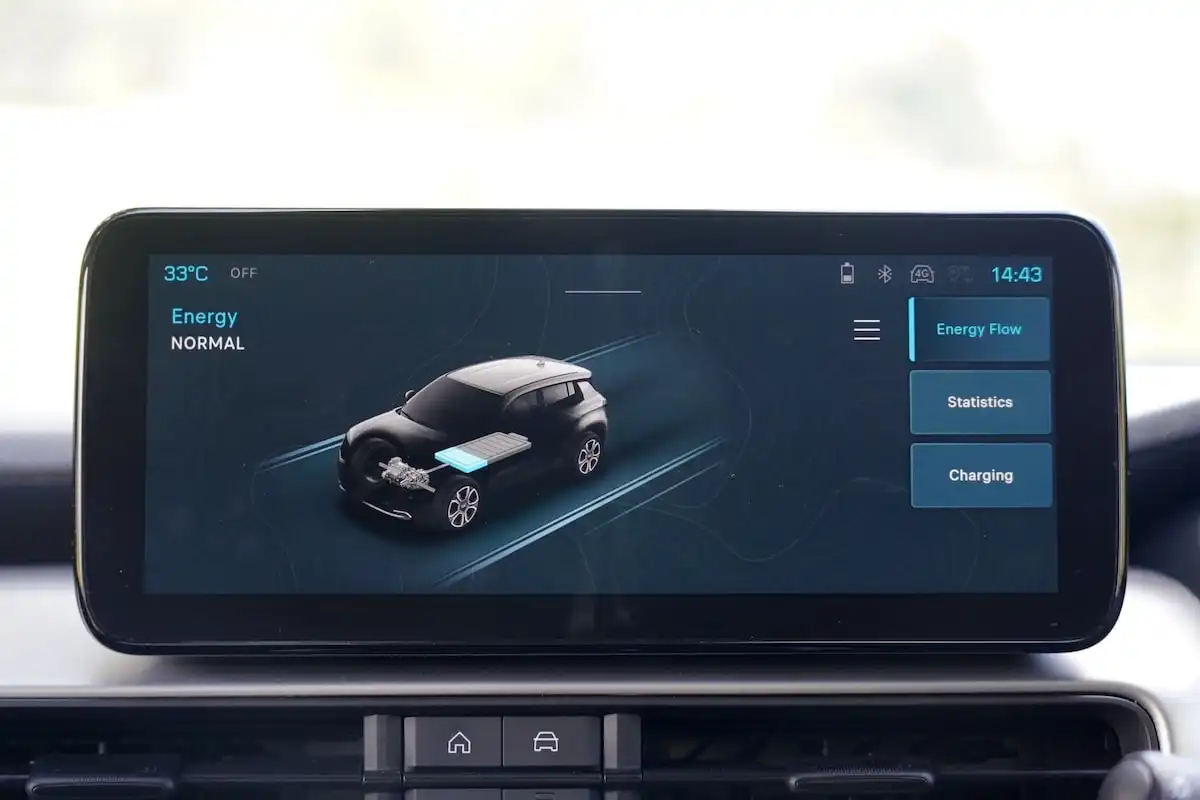
The Avenger’s connected services system offers clever touches like remote vehicle controls to unlock the doors, turn on the air conditioning before you enter the cabin, check your battery status or tailor your charging times at home when it best suits.
All up, the Avenger’s technology package is solid, though doesn’t offer the level of depth you get it some of its EV rivals.
Does the Jeep Avenger Have Wireless Apple CarPlay & Android Auto?
Potential buyers will be pleased to know that all members of the Avenger range, from the entry-level Longitude through to the Limited and Summit all pick up wireless smartphone connectivity.
Jeep’s latest infotainment tech allows you to pair your iOS or Android device and access Apple CarPlay & Android Auto wirelessly while your phone remains in your pocket or stashed on the wireless charging pad.
The process of pairing your device with the Avenger’s wireless smartphone mirroring is quick and simple and while we did experience a few drop-outs in the connection, you do have the option of a wired connection via a USB-C port while using Apple CarPlay or Android Auto.
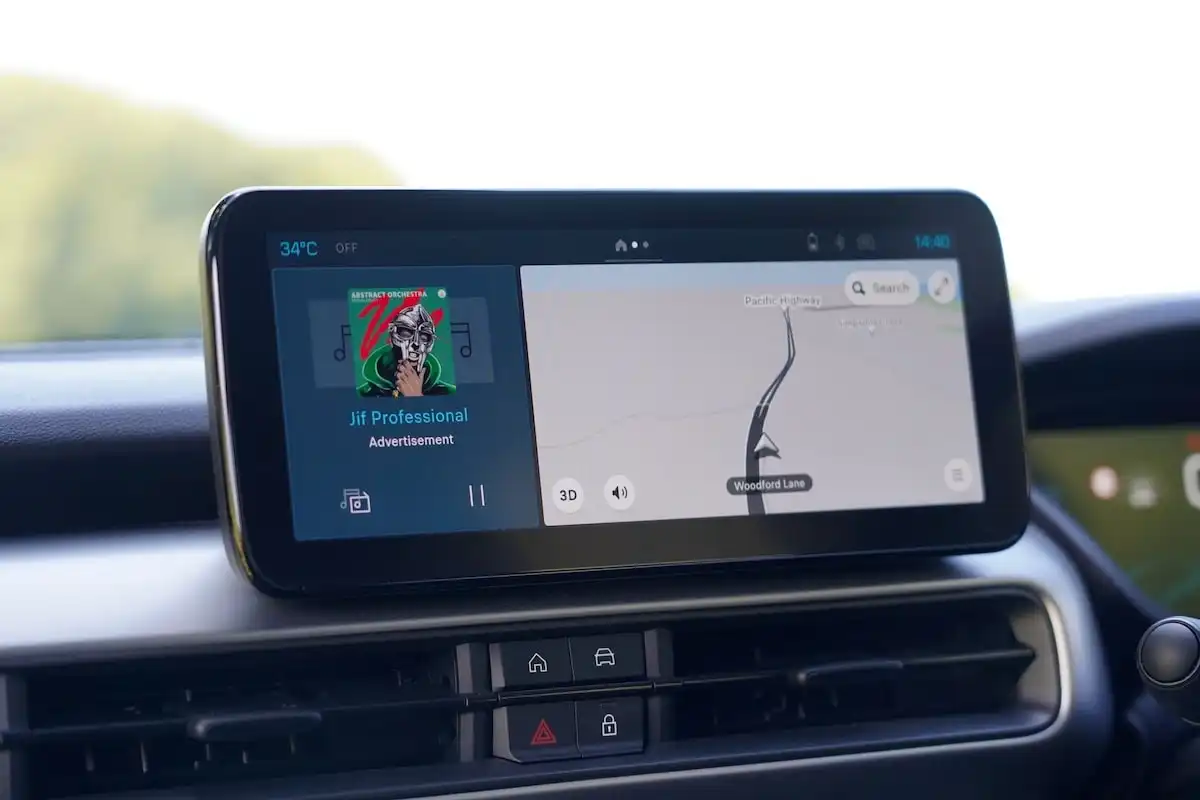
Is the Jeep Avenger Comfortable to Drive?
The Jeep Avenger is a bit of a departure for a brand famous for its tough, off-road creations.
Instead, the Avenger has been designed to tackle the urban jungle with confidence and, in this respect, it doesn’t disappoint - but this also means it’s not an electric one-size-fits-all package for Australian buyers.
Under the bonnet you’ll find a front-mounted electric motor that produces 115kW of power and 260Nm of torque, sending all of its power to the front axle.
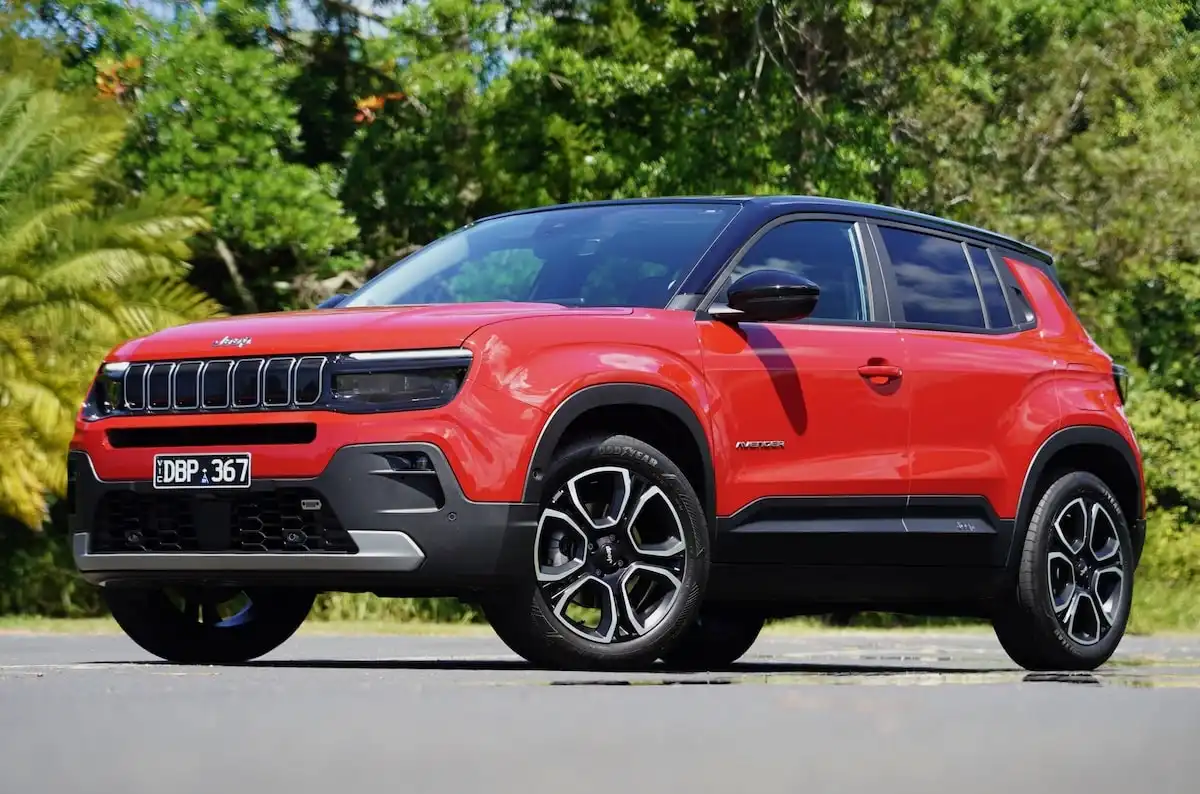
For now, at least, there is no option of a dual-motor AWD variant for the Avenger - a testament to Jeep’s more urban-centric design philosophy for its baby SUV.
While it doesn’t have a heap of power at its disposal, the Avenger remains one of the most lightweight, small electric SUVs on the market, which means that it doesn’t struggle to pick up the pace on the road.
When you’re taking off from a set of lights, for example, switching the drive mode into sport and stomping your right foot means you’ll pounce off the line thanks to the immediate torque delivery.
The same applies for any mid-range boost up to speed around town, though the Avenger’s acceleration is pretty leisurely when you’re out on the highway.
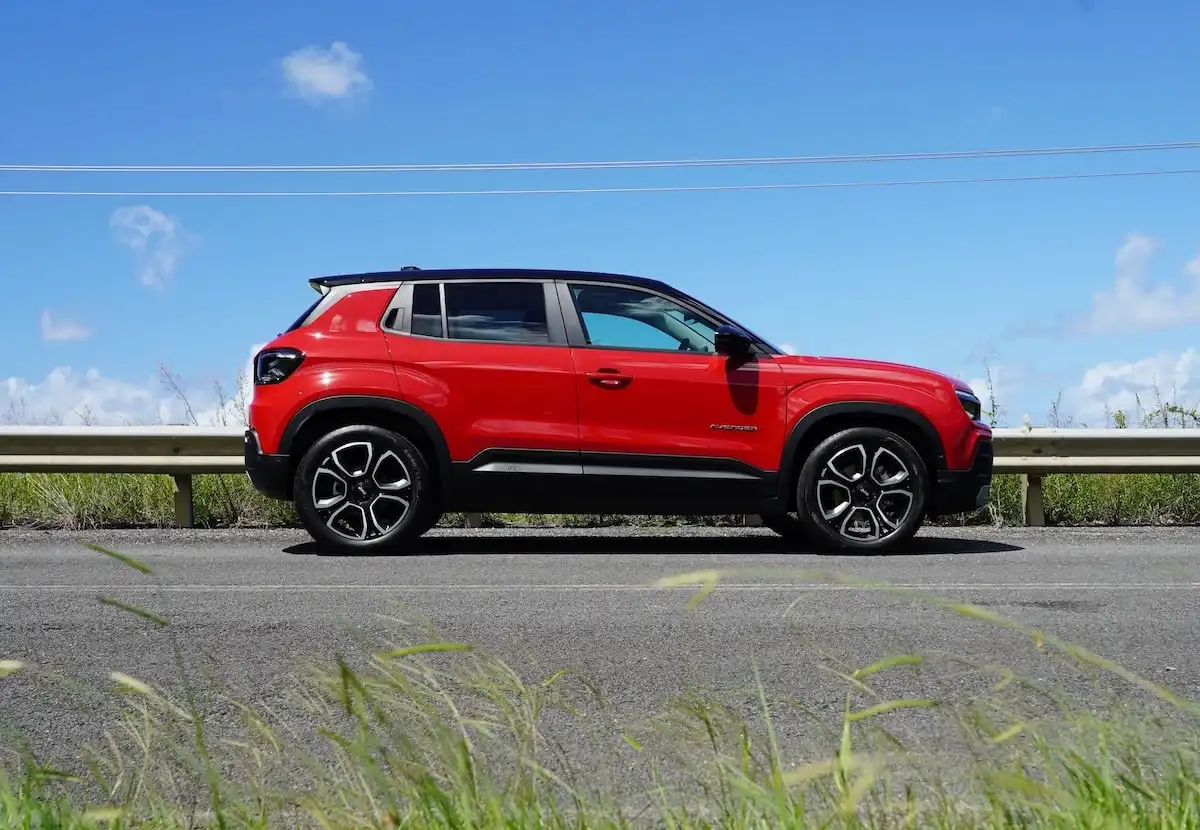
In terms of the driving experience, there’s no major faults for Jeep’s setup for the Avenger around town where it remains light on its feet and surprisingly refined on a daily beat.
The steering is incredibly lightweight, perhaps too light for some tastes, though it does make it easy to throw the Avenger around and squeeze into any vacant spots without working up a sweat.
We’d prefer a bit more in the way of feedback, but this is ultimately subjective and a characteristic that lends itself well to an effortless little city package with a tight turning circle that is perfect for the urban jungle.
The Avenger’s handling also proves perfect for the city, with a relatively stiff suspension package underneath and lightweight platform helping to keep things planted while providing some zippy performance.
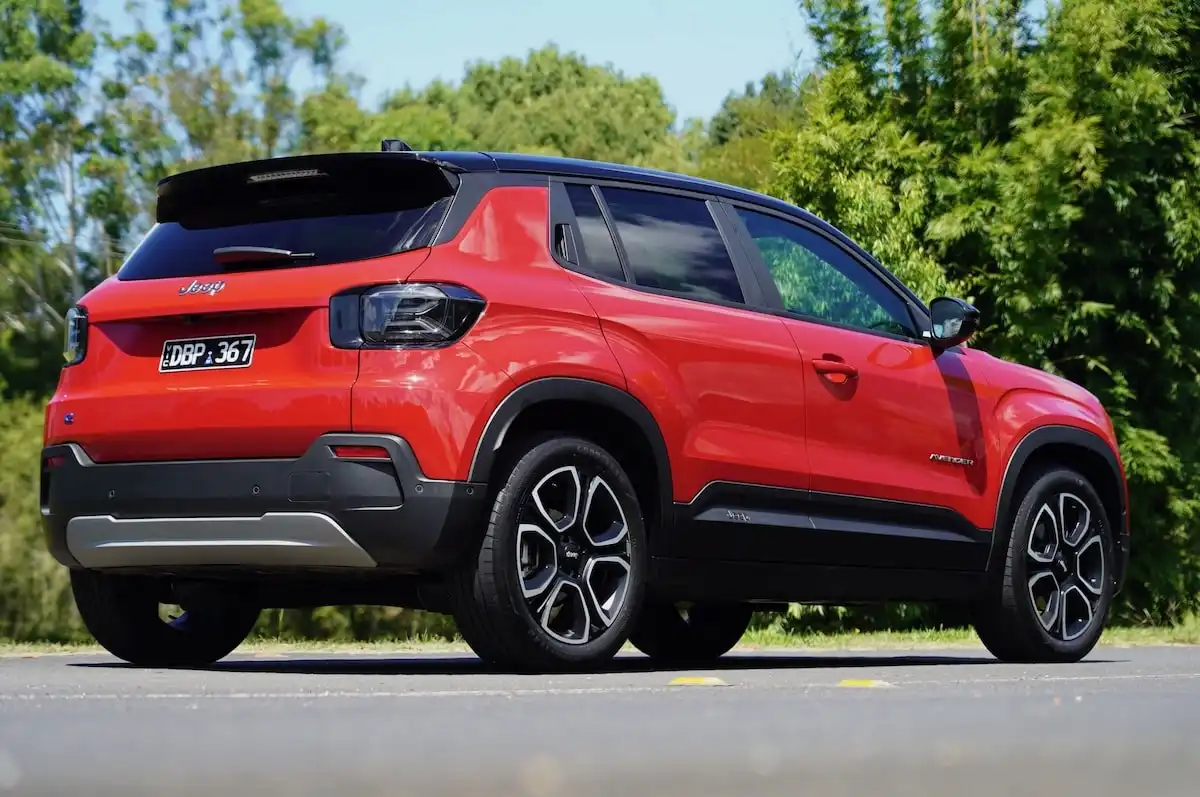
Head out on the open road and the Avenger isn’t quite as whisper-quite as its main rivals, with some road and wind noise entering the cabin and some small, isolated sounds from various trim pieces rattling around on rougher surfaces.
Around town it’s much more quiet and refined, though this only emphasises another key gripe of ours.
The Avenger’s indicators have been given some custom sound effects of a person beat-boxing and while a little quirky at first, was doing our head in after a week, particularly when you’re stationary at a set of lights.
All up, the Avenger excels as a cheerful little SUV package for the urban jungle, though it certainly doesn’t blow any of its rivals out of the water.
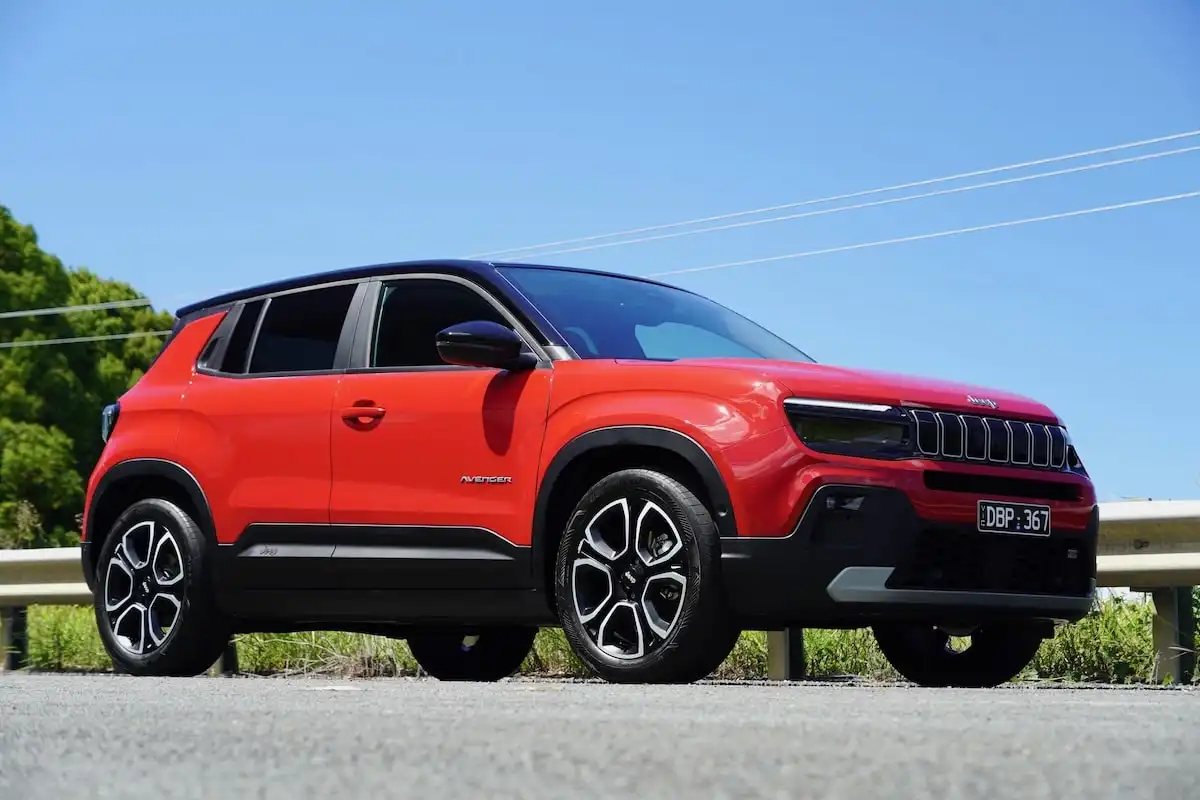
Is the Jeep Avenger an Off-Roader?
While it comes from a company renowned for its all-terrain champions, the Jeep Avenger’s focus is on the tarmac.
That said, the Avenger does offer some healthy ground clearance figures and fairly steep approach and departure angles that make it one of the more versatile members of the electric small SUV segment.
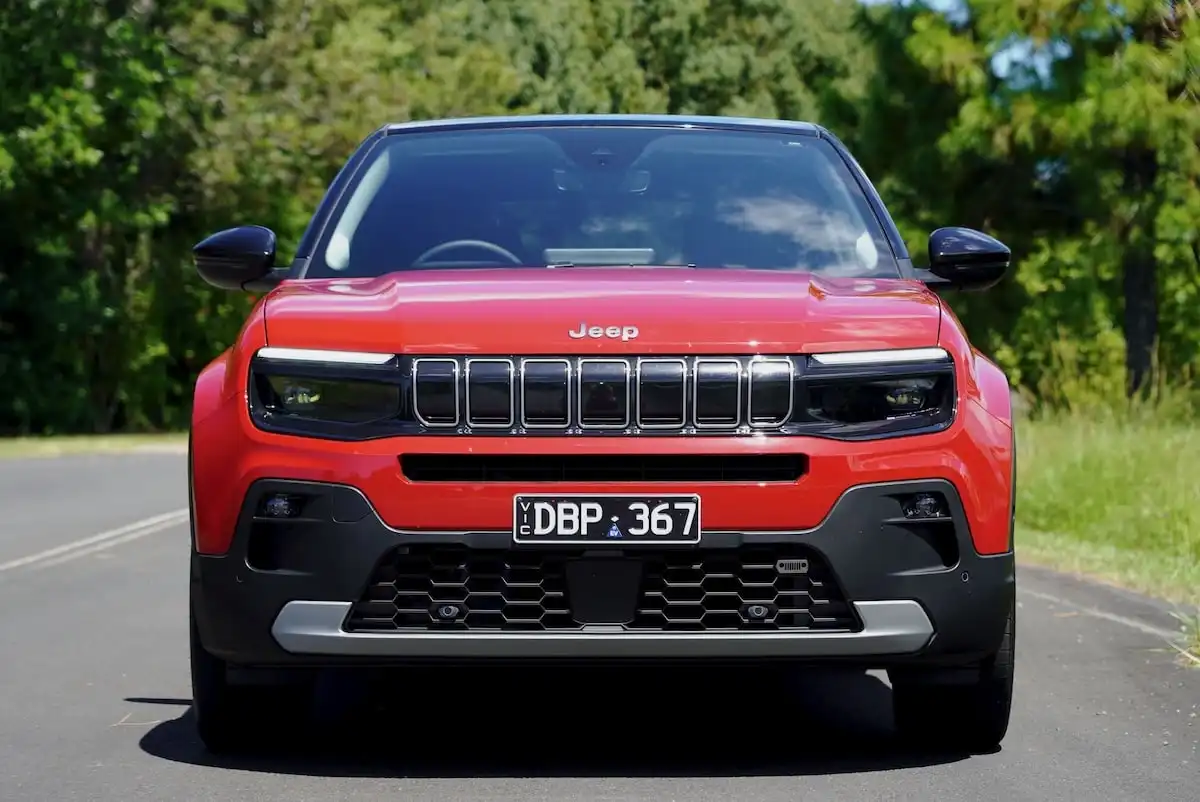
The Avenger also picks up Jeep’s Selec-Trac adjustable drive modes with different calibrations for snow, mud and sand.
As a result, the Avenger sits as a confident little SUV package for some light off-roading duties, though the addition of an all-wheel drive system would help to bolster its appeal as an adventure-ready little electric SUV.
-
Ground Clearance: 209mm
-
Approach Angle: 20 degrees
-
Breakover Angle: 20 degrees
-
Departure Angle: 32 degrees
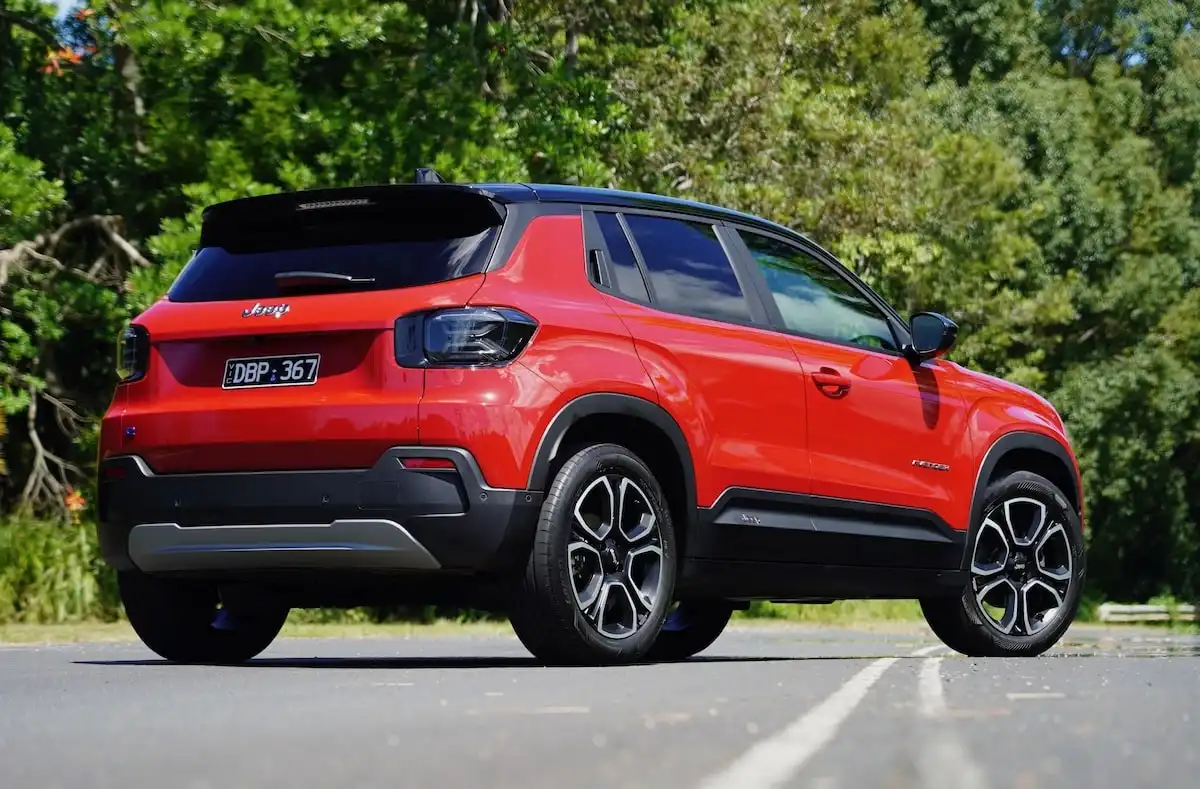
How Far Can the Jeep Avenger Drive Per Charge?
Jeep packages the entire Avenger range with a reasonably compact 54kWh battery pack.
Combined with Jeep’s claimed energy efficiency figures of 15.8kWh per 100km and you can expect best-case range figures of 390km per charge in the Avenger Summit range.
In our time behind the wheel, we averaged 16.5kWh/100km over a mix of town, country and long highway stints covering around 700km, showing that Jeep’s efficiency claims are pretty easy to match in the real world.
Energy efficiency figures are slightly better in the Longitude and Limited which consumed a claimed 15.6kWh/100km and provide an extra 6km of range, totalling 396km per charge.
The Avenger has a regenerative braking system to maximise its energy efficiency, though there’s no one-pedal driving mode like you’ll find in many of its rivals.
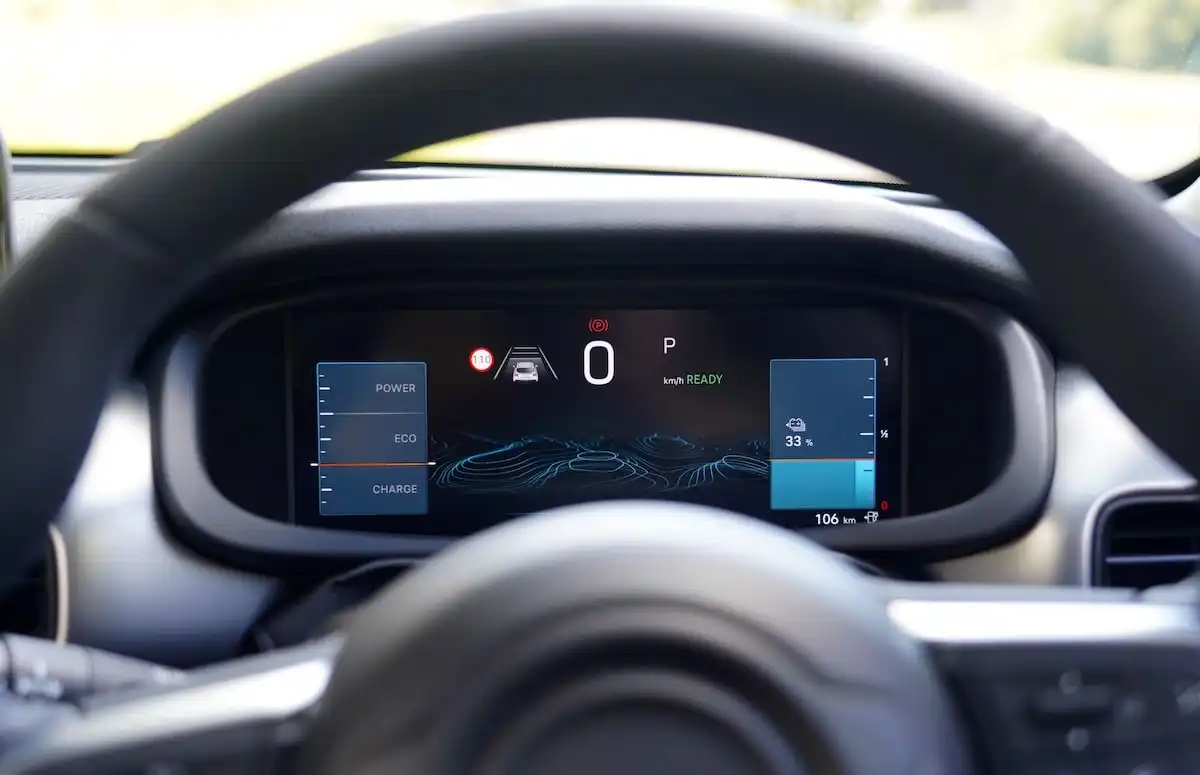
Instead, there’s two levels of adjustment with the most significant brake force supplied by an two presses of the D/B button which provides moderate deceleration that is perfect for town driving, though one-pedal driving would be a particularly nice touch for commutes in traffic.
There is, unfortunately, no vehicle-to-load charging system which is a bit of a miss for an electric vehicle in 2025.
In terms of charging, the Avenger’s peak DC fast-charging figures of 100kW aren’t the fastest you’ll find on the market, though you can still bring the pack from 20 - 80 per cent in around 30 minutes.
The Avenger’s peak AC charging speeds stand at 11kW.
-
Avenger Battery Size: 54kWh NMC lithium-ion
-
Avenger Summit Energy Efficiency Figures: 15.8kWh per 100km
-
Avenger Summit Range Figures: 390km
-
Avenger Longitude/Limited Range Figures: 396km
-
Avenger DC Fast-Charging Speed: 100kW
-
Avenger AC Charging Speed: 11kW
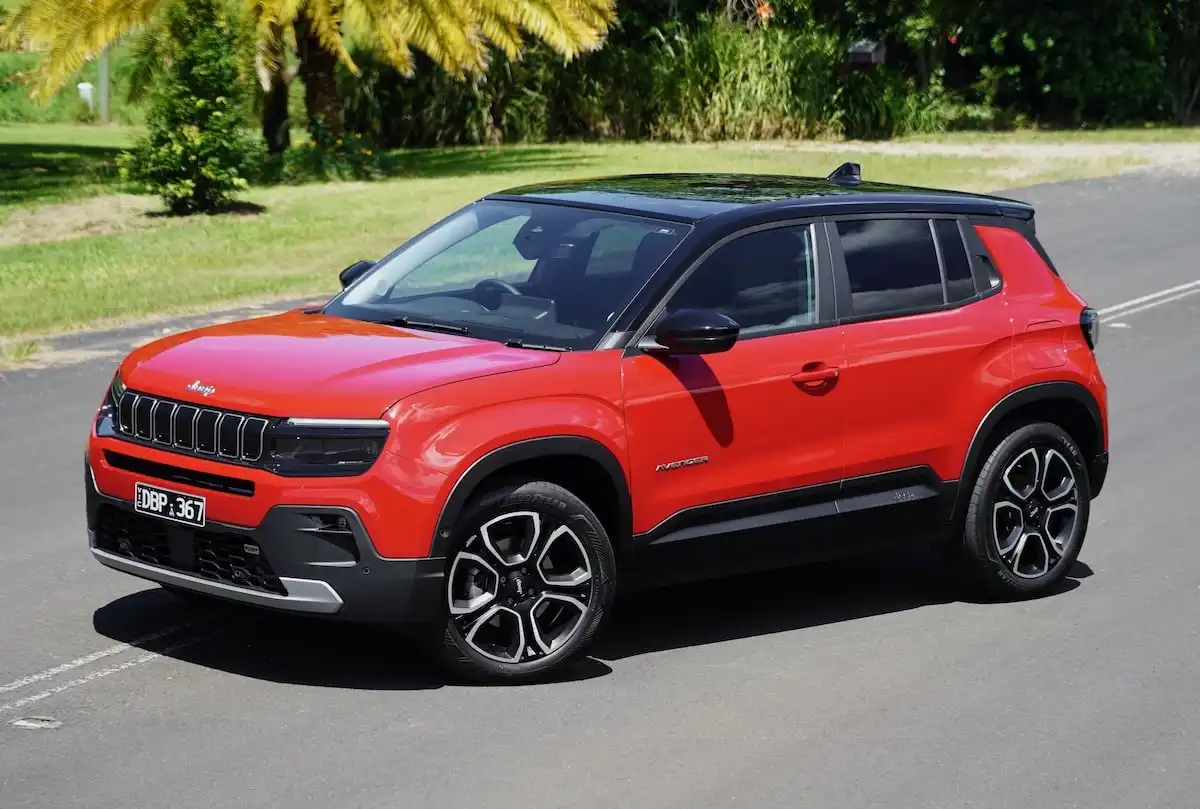
Is it Practical and Spacious?
Space and practicality inside the Avenger are a bit of a mixed bag.
Things are fabulous up front, but the rear seats leave a lot to be desired and there’s more than a few cheap interior trim pieces that don’t quite meet customer expectations at the $60k price mark.
Kicking things off with the cockpit, the Avenger Summit’s heated, massaging and leather-upholstered seats are nice and wide, with some bolstering on the sides to help keep you in place.

The leather-wrapped steering wheel also feels great, with a nice chunky feel and a sporty flat-bottomed design and a straightforward layout for the media and cruise control buttons that doesn’t over-complicate things.
Headroom in the front of the cabin is decent, so long as you drop the seat to its lowest position, with no real issues for tall adults in the front of the cabin.
In terms of ergonomics, there are a few quirks, namely the park, reverse, neutral and drive buttons being located at the bottom of the centre console, though the steering wheel picks up rake and reach adjustment.
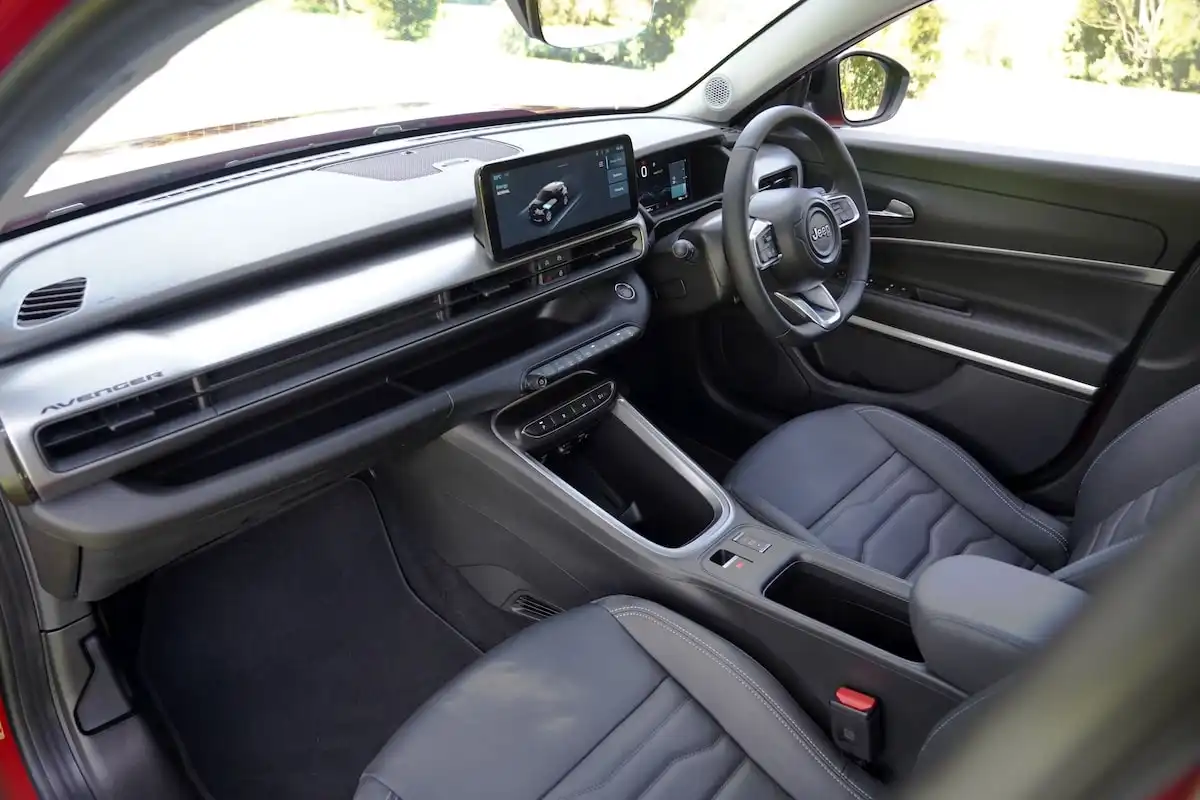
The centre armrest picks up a nice, soft finish for your left elbow, though your right elbow doesn’t get the same treatment, with a just thin layer of foam failing to properly cushion the hard plastic lurking beneath.
On the topic of plastic, there’s a lot of it inside the Avenger’s cabin - even in this range-topping Summit variant, which is a bit of a letdown for the money.
There’s cheap, scratchy plastic everywhere from the dash to the entire door sill, with the dashboard and centre console picking up the same material that leaves a lot to be desired when you check out interiors offered in key rivals.
We understand that cost-cutting is a necessary evil, particularly in a brand-new vehicle with a costly development process, but the Summit feels more like an entry-level variant with the amount of cheap plastic lurking around.
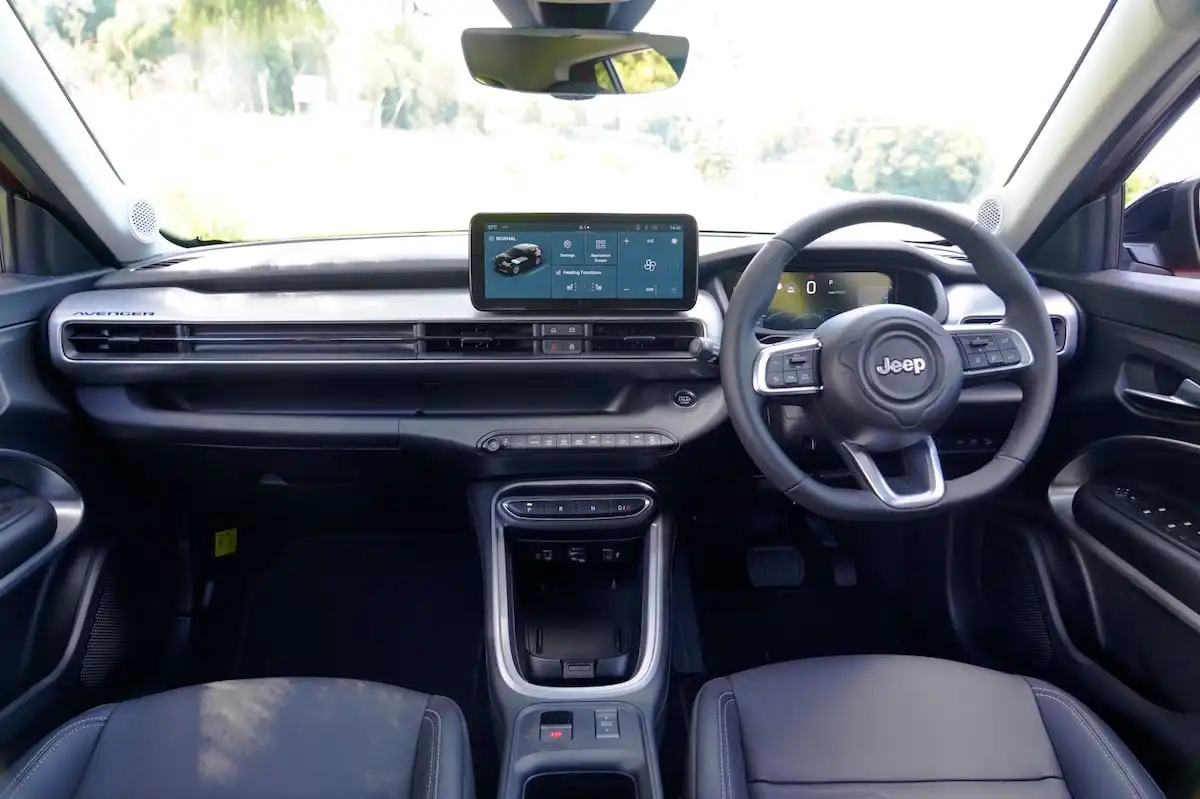
Thankfully, the Avenger’s bespoke design claws back and provides outstanding levels of storage and practicality.
There’s a large storage tier stretching from the passenger’s seat to below the 10.25-inch display for loose items and smartphones, another big storage bin and rubberised smartphone charger at the base of the dash, as well as a third bin housing a pair of adjustable cupholders.
You also pick up another storage area inside the folding armrest which can be moved back and forward, to your preference, as well as normal-sized bottle holders in the door sills and a glovebox.
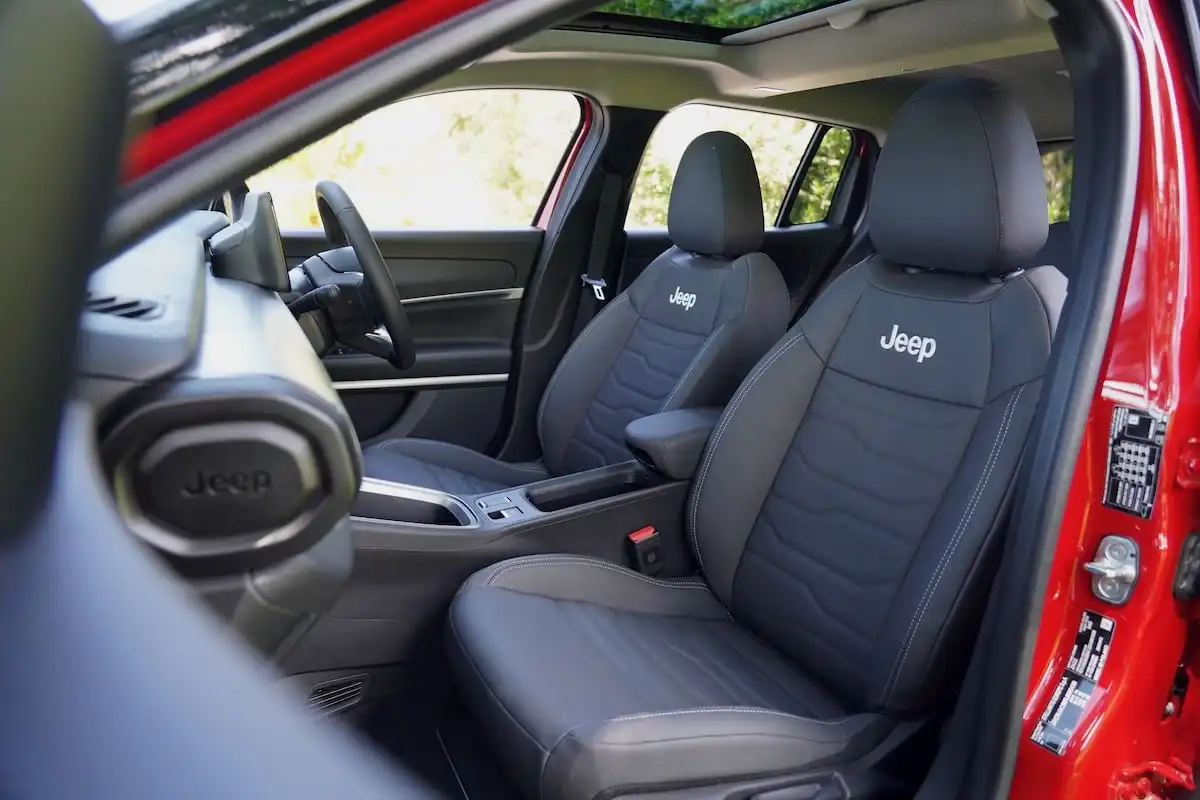
In terms of accommodation and storage up front, then, the Avenger is a particularly strong performer - though the same can’t be said for what’s on offer in the back.
Adults will struggle to fit behind a tall driver without sacrificing some real estate up front, while head space is limited to just a few fingers if you’ve got a long torso.
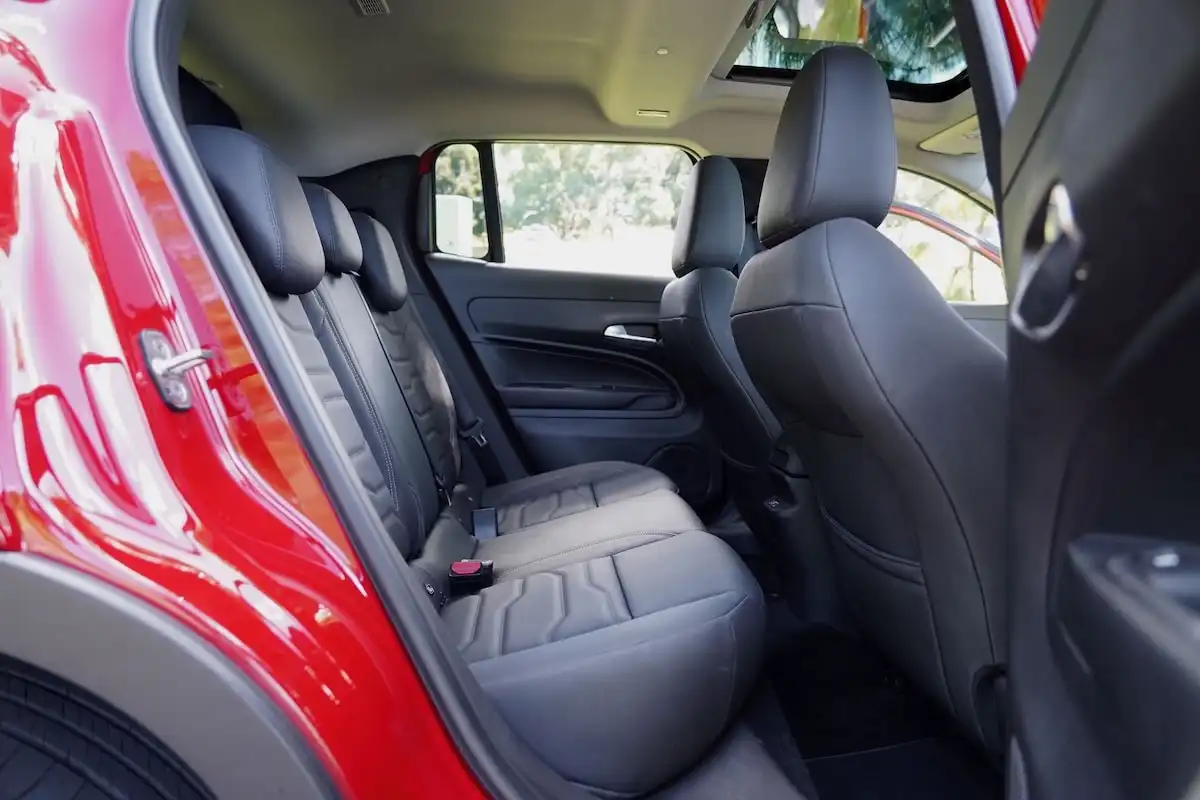
Of course, this is never a particularly strong area for compact SUVs, but inherent practical benefits of a battery-electric platform haven’t really amounted to anything Avenger which is a bit of a let down.
Amenities in the rear of the cabin are also pretty sparse, with a single USB-C charging port and map pockets remaining your only creature comforts.
For parents, the Avenger is packaged with two pairs of ISOFIX anchors, with three top tether mounts hiding on the seatbacks, though accommodation is too cramped for many bulkier child seats on the market without moving the front passenger’s seat pretty significantly.
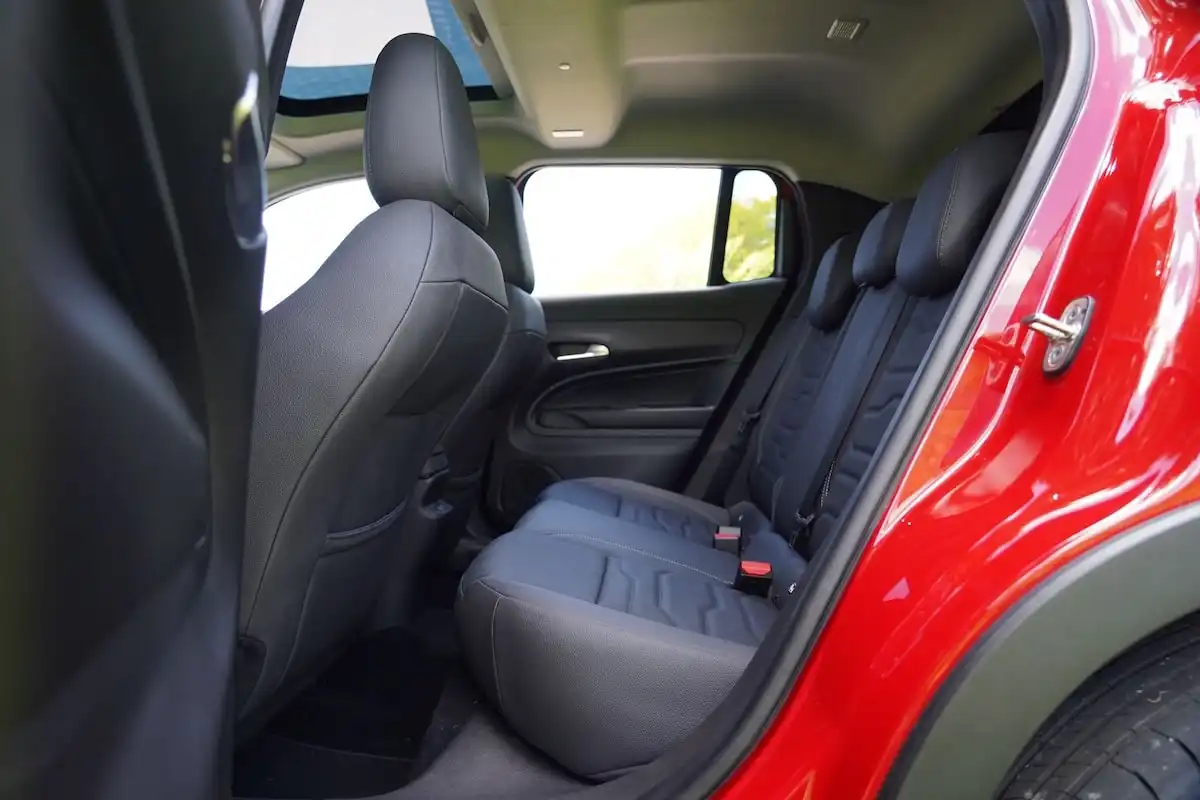
How Big is the Jeep Avenger’s Boot?
While the Avenger’s rear cabin isn’t the most capacious, Jeep has at least packaged it with a pretty healthy amount of boot space and an adjustable boot floor design to stash away your charging cables.
With the rear seats standing, the Avenger’s boot measures 355L which certainly doesn’t lead the electric SUV segment, but remains a useable amount of real estate.
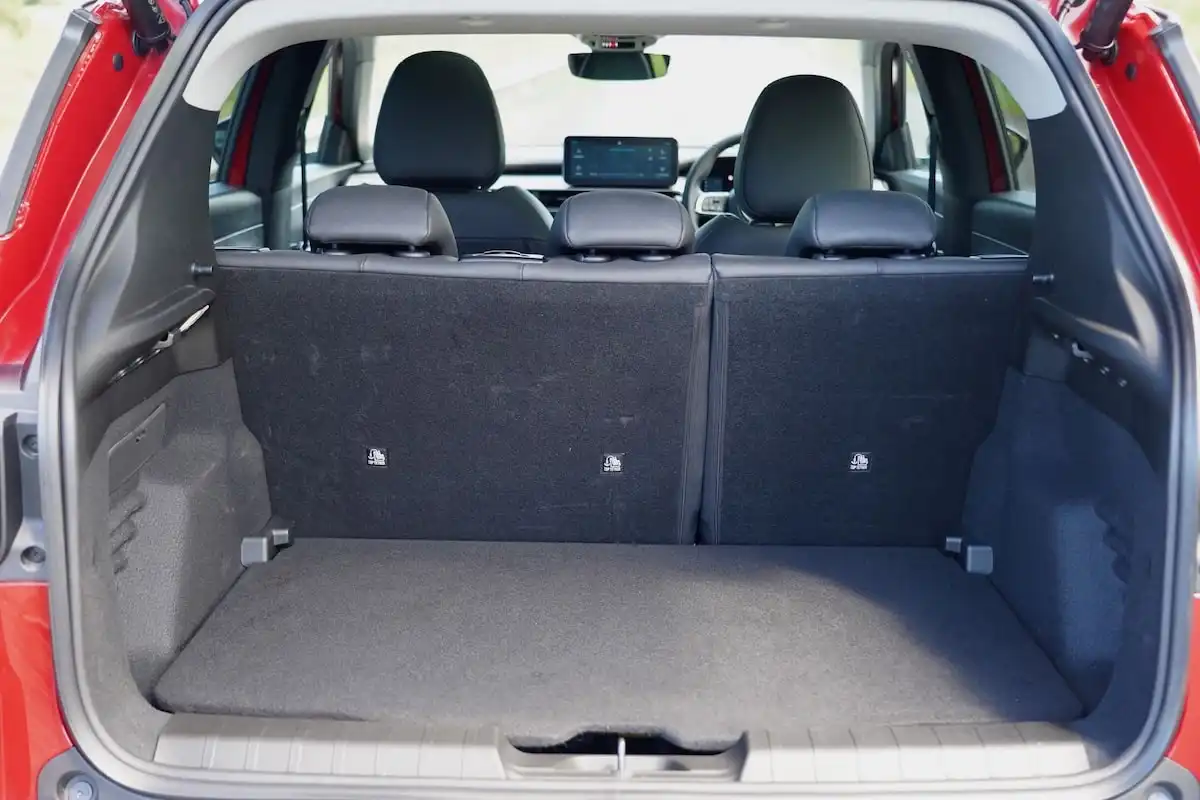
Fold the Avenger’s 60:40 split rear seats forward and you’ll unlock a total of 1,252L worth of storage when it’s time to lug around bulky cargo and sports gear.
The Avenger’s boot features an additional layer of storage underneath the floor which proves a great place to hide your charging cables and other shallow items or valuables out of sight.
There’s no additional storage underneath the Avenger’s bonnet, which is taken up by the front-mounted electric motor, nor a space saver spare tyre, with a tyre repair kit thrown in, instead.
-
Jeep Avenger Boot Space Minimum: 355L
-
Jeep Avenger Boot Space Maximum: 1,252L
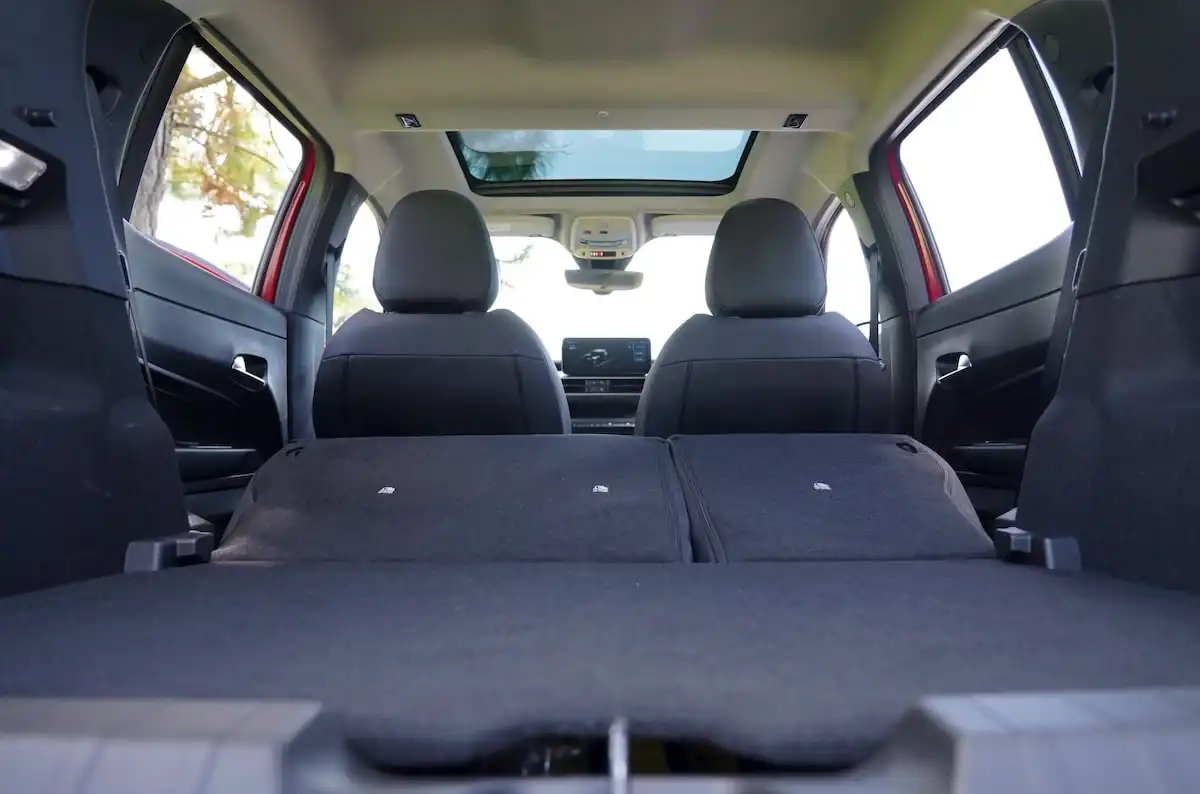
Is it Safe?
Jeep packages the range-topping Avenger Summit range with a hefty list of safety tech, though price-conscious buyers should note that the entry-level Longitude misses out on some key safety features.
As standard, the Avenger Summit picks up autonomous emergency braking with pedestrian and cyclist detection as well as adaptive cruise control, lane-keep assist, blind-spot monitoring, lane-centring, traffic jam assist and a rear-view camera with front, side and rear parking sensors.
This means that even the flagship version misses out on rear cross-traffic alerts which is a great piece of safety kit, particularly for city buyers, while blind-spot monitoring and Jeep’s intelligent adaptive cruise control system are reserved for the Limited and Summit variants.
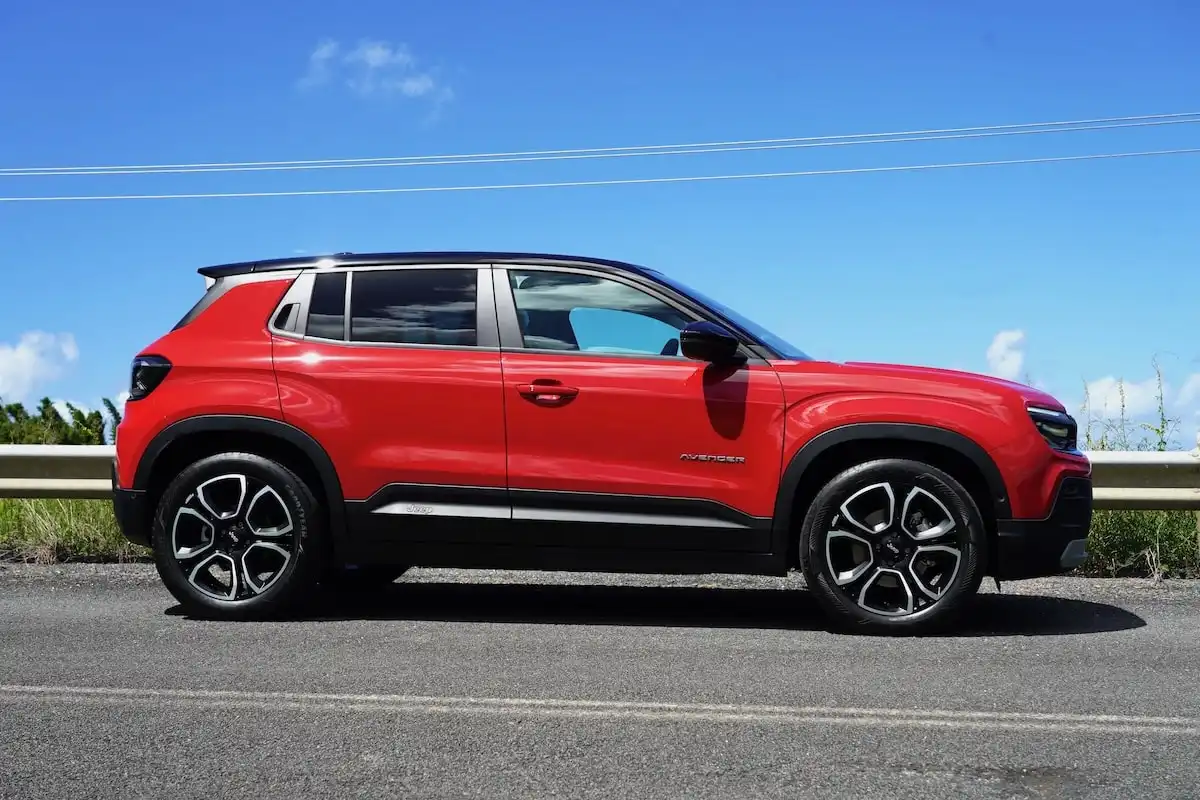
Does the Jeep Avenger Have an ANCAP Safety Rating?
The Jeep Avenger range has picked up a three-star ANCAP safety rating after testing in 2024 saw it score the following marks.
-
Adult Occupant Protection: 79%
-
Child Occupant Protection: 71%
-
Vulnerable Road User Protection: 59%
-
Safety Assist: 54%

What Warranty Does the Jeep Avenger Come With?
Jeep offers the Avenger range with a five-year/100,000km warranty for the vehicle itself, while the Avenger’s battery pack is covered by an additional eight-year/160,000km warranty.
Jeep also offers five years’ worth of capped-price servicing at a particularly affordable rate alongside a lifetime roadside assistance package if you keep it serviced within the network.
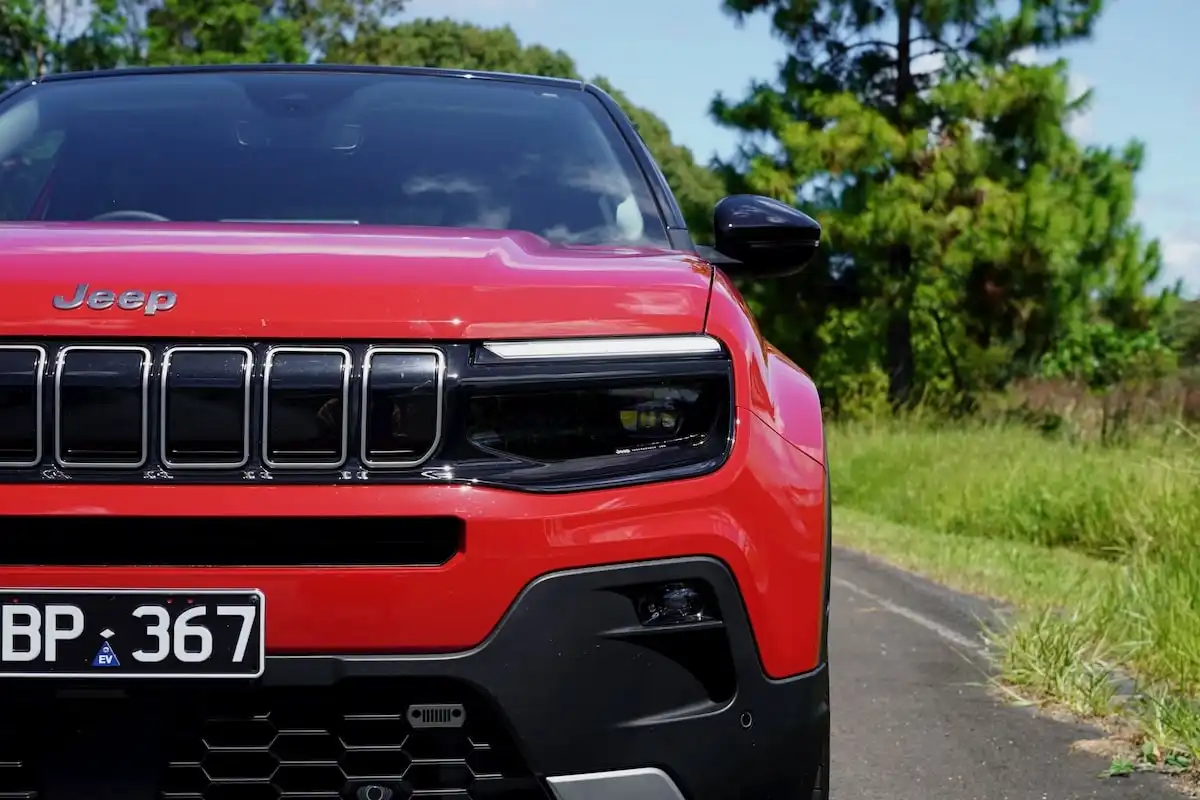
Total servicing costs for the Jeep Avenger over the course of five years total just $1,250, making it a very affordable vehicle to maintain.
Service intervals for the Avenger stand at 12 months or 12,500-kilometres, whichever elapses first.
Our Verdict: Is the Jeep Avenger Worth it?
With its current pricing, the range-topping Jeep Avenger Summit is a tough one to recommend, with the base Avenger Longitude remaining the best option when it comes to value.
The Avenger falls short of its main rivals when it comes to range, fast-charging tech, interior space, though it does offer some charisma behind the wheel and the potential of some very light off-road excursions.
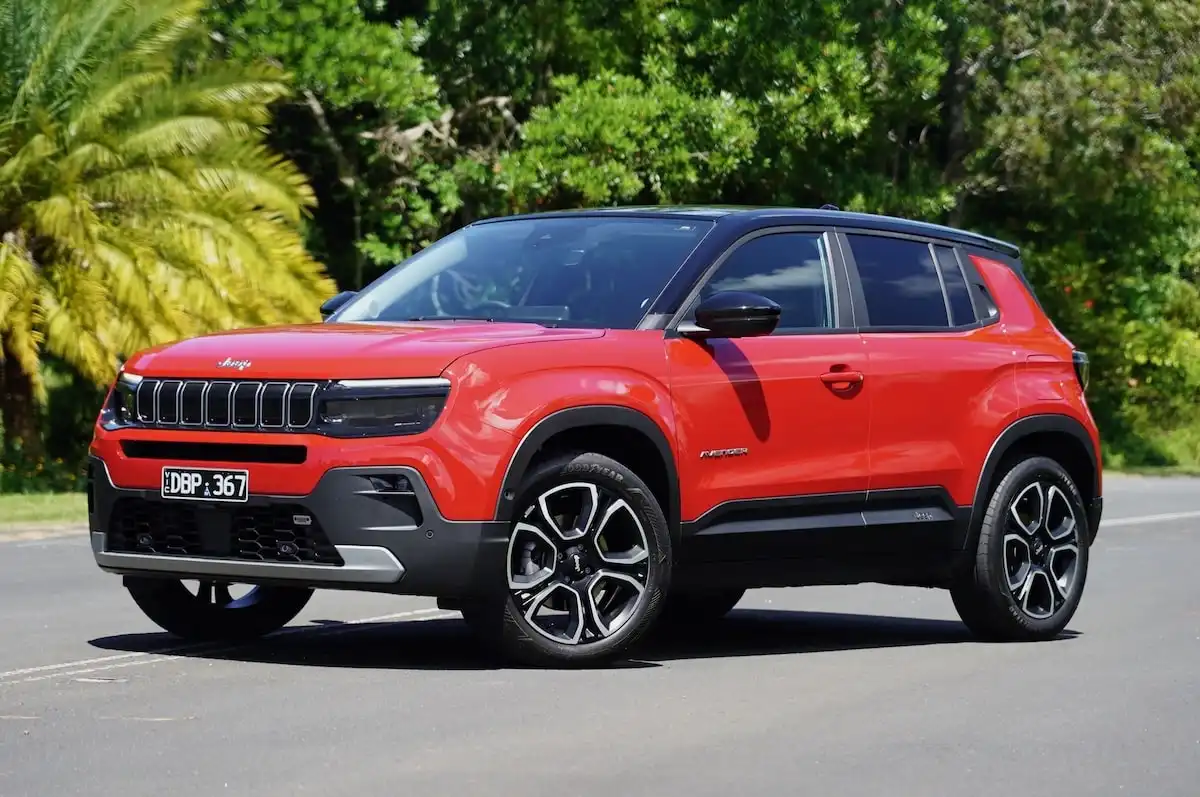
The Summit is not a bad car by any stretch, but it’s inescapable that for similar, even significantly less money, many of the Avenger’s rivals offer more interior acreage and more generous driving figures that make a big difference for buyers covering large distances here in Australia.
That said, there’s a lot to like about the Avenger in base Longitude form which provides the same cabin layout and solid energy efficiency scores while sitting $10,000 cheaper than the Summit - remaining by far the best option within the Avenger lineup.
In a nutshell, the range-topper doesn’t make much sense in the current landscape, while the baby of the range has a far stronger value proposition within the battery-electric, compact SUV segment.
Don’t forget that if you’re looking to upgrade to a new car, our team of car-buying experts is waiting to help you find the best possible price.
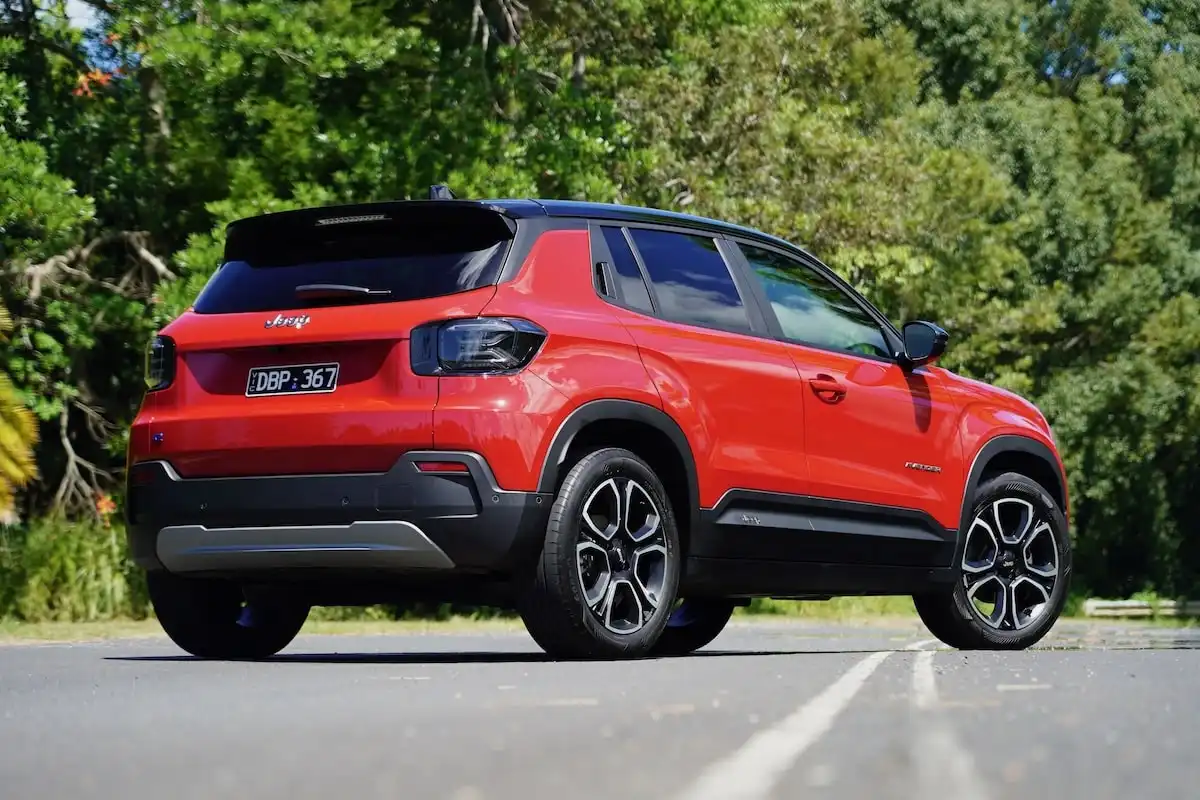
Five Jeep Avenger Specs You Need to Know
-
Five-year/100,000km warranty
-
Eight-year/160,000km battery warranty
-
390km range from 54kWh battery pack
-
350 - 1,252L boot space
-
Three-star ANCAP safety rating
Get in touch with one of our Car Buying Specialists today.
Request a quote